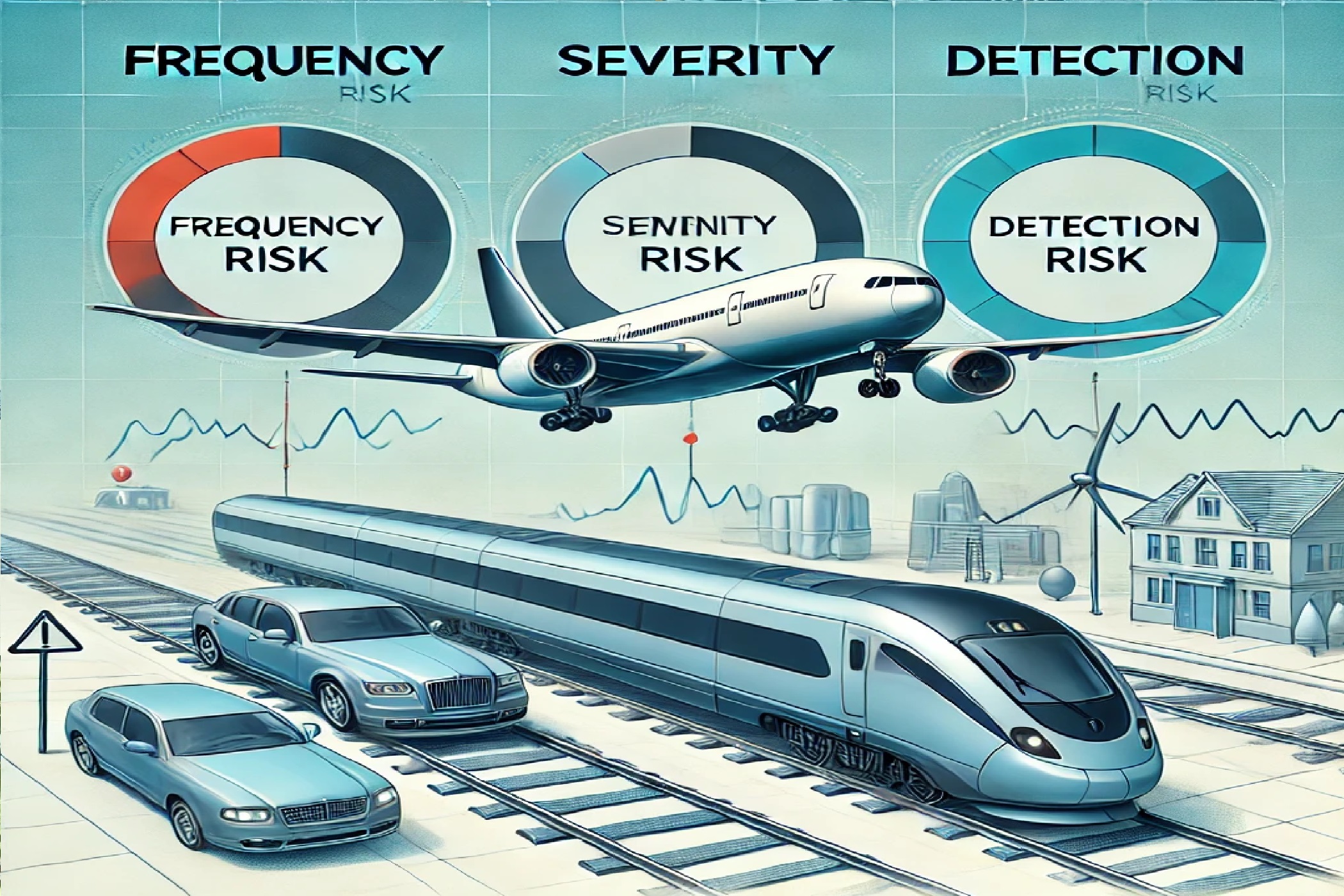Analyzing Risk in Automotive vs. Aerospace and Rail Sectors: Frequency, Severity, and Detection
Risk analysis is a cornerstone of safety-critical industries such as automotive, aerospace, and rail. Despite their shared goal of ensuring safety, these sectors approach risk assessment differently due to the unique characteristics of their operations, regulations, and societal impact. One stark contrast lies in the focus on frequency of hazardous scenarios in the automotive industry versus the emphasis on severity and detection in aerospace and rail sectors. This article examines the reasons behind these differing priorities.
1. Risk in the Automotive Sector: A Focus on Frequency
In the automotive industry, the frequency of hazardous situations plays a central role in risk analysis. Several factors explain this emphasis:
- High Volume of Vehicles and Interactions: The automotive sector involves billions of vehicles worldwide, each operating in diverse environments. This scale dramatically increases the likelihood of hazardous scenarios, such as collisions or mechanical failures. Thus, reducing the frequency of these events directly contributes to overall safety.
- Decentralized Operation and Responsibility: Unlike aerospace or rail, where operations are centrally controlled, vehicles are driven by individuals with varying levels of skill and attentiveness. This decentralization amplifies the need to focus on frequent, predictable risks such as human error, which accounts for a significant portion of road accidents.
- Cost-Effective Mitigation Strategies: Addressing frequent scenarios allows automakers to implement widespread, relatively low-cost solutions (e.g., advanced driver-assistance systems or lane-keeping technologies) that significantly impact safety.
- Regulatory and Public Perception: Societal tolerance for risk in automotive contexts is relatively high due to its ubiquity. Therefore, regulators prioritize interventions that target common risks to maximize public benefit.
2. Aerospace and Rail: Severity and Detection as Priorities
In contrast, aerospace and rail sectors focus less on frequency and more on mitigating severity and ensuring effective detection of hazardous scenarios. Here’s why:
- Lower Frequency of Operations: Aerospace and rail systems involve fewer vehicles operating in highly controlled environments. For instance, commercial flights and train journeys are tightly regulated, with comprehensive planning and scheduling. The probability of hazardous situations is already low due to stringent safety protocols.
- High Stakes and Catastrophic Consequences: When accidents occur in aerospace or rail systems, they often have catastrophic consequences involving significant loss of life and extensive property damage. This elevates the importance of addressing severity—ensuring that if an accident does occur, its impact is minimized.
- Sophisticated Detection Systems: Aerospace and rail sectors rely heavily on advanced technologies to detect and prevent hazards before they escalate. For example, real-time monitoring of train systems or aircraft engines allows for immediate intervention. The focus is on ensuring these detection systems are robust and effective, as they are key to maintaining safety.
- Public and Regulatory Expectations: Unlike road transport, where accidents are relatively normalized, aviation and rail industries face near-zero tolerance for failure. This societal and regulatory pressure pushes these industries to prioritize the prevention of catastrophic events over addressing frequent but minor incidents.
3. Differences in Mitigation Strategies
Automotive Sector: Mitigation focuses on preventing frequent scenarios through driver assistance technologies, vehicle design improvements, and infrastructure enhancements. The severity of individual events is generally lower, allowing for more distributed risk mitigation.
Aerospace and Rail: Strategies focus on reducing the impact of rare but severe events, such as through robust crashworthiness, fireproofing materials, and comprehensive evacuation procedures. Detection and redundancy systems are also emphasized to preemptively manage risks.
4. Conclusion
The contrasting approaches to risk analysis in the automotive, aerospace, and rail sectors stem from the inherent differences in their operational scales, risk tolerance, and the nature of potential hazards. While the automotive industry targets frequent, low-impact scenarios, aerospace and rail sectors concentrate on rare but catastrophic events. Both approaches are tailored to their respective environments, ensuring safety through optimized risk management strategies.
By understanding these distinctions, stakeholders in each sector can continue to refine their practices, contributing to safer and more reliable transportation systems worldwide.

